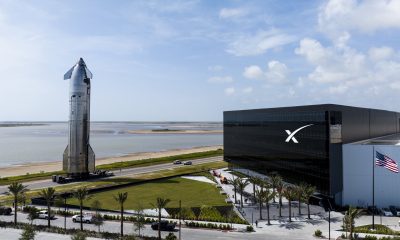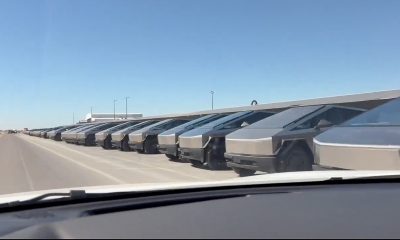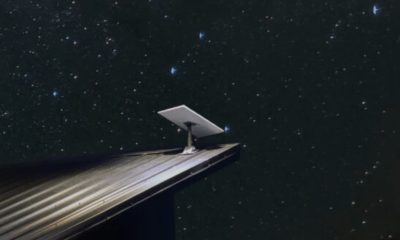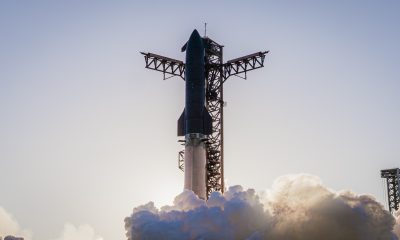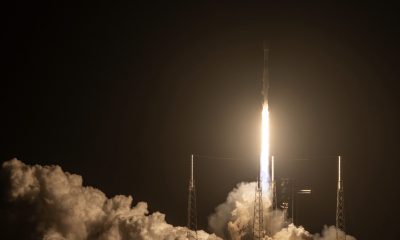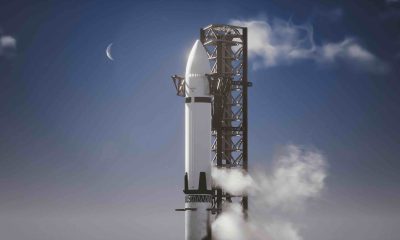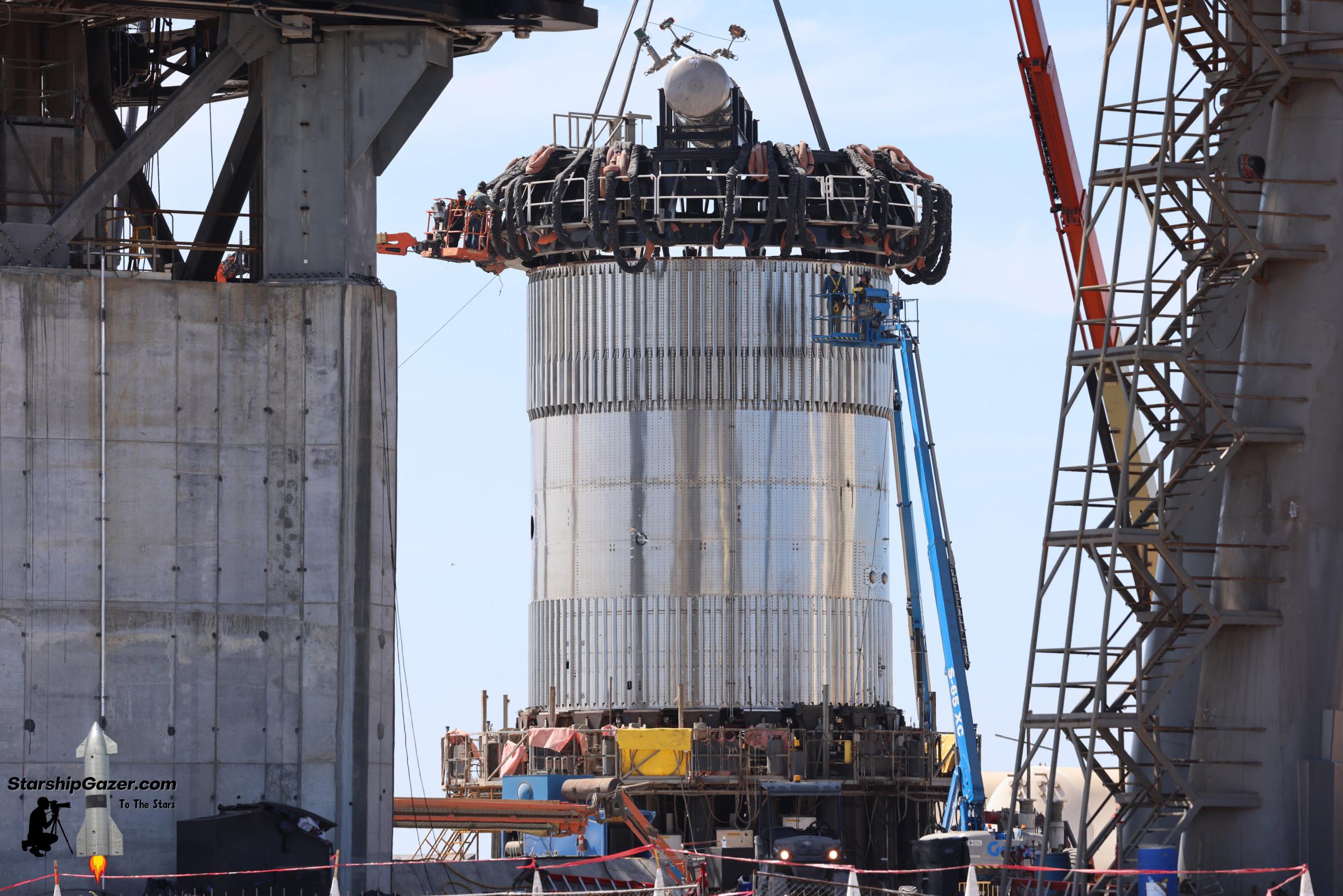
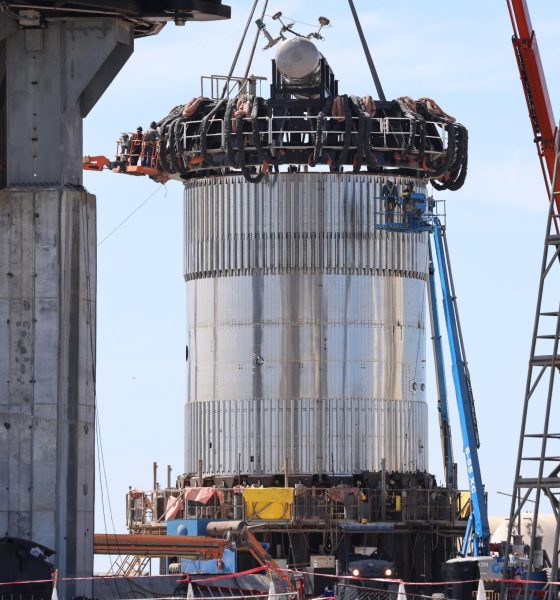
News
SpaceX to attempt to crush Starship test tank
A week after rolling a different ‘test tank’ from its South Texas Starship factory to nearby launch and test facilities, SpaceX has moved a second test tank to the pad.
Hearkening back to a period in 2020 where SpaceX built and tested six different Starship test tanks in a period of six months, the company appears to be preparing to test another batch of tanks in the hopes of qualifying Super Heavy booster design changes and clearing the way for a significant upgrade to all Starship tank domes. The sequencing of the latest tank raises some questions, however.
Known unofficially as the “EDOME” tank in reference to a cryptic label on the side of one of its halves, the first new test tank’s purpose is much more cut and dry. While its steel rings appear to be unchanged from current Starship and Super Heavy prototypes, the tank’s two domes share almost nothing in common with the dozens of domes SpaceX has built and tested over the last three years of development. The new domes are much simpler and should be easier to manufacture than the domes SpaceX is familiar with. Thanks to their more spherical shape, they should also be more efficient, allowing future Starship tanks to store a bit more propellant while taking up the same amount of vertical space. SpaceX has yet to begin testing the EDOME tank since its June 8th rollout and does not appear to be much closer to starting 12 days later.
On June 16th, SpaceX rolled a second test tank to the launch site, which eventually joined the EDOME tank at a staging area that used to be a Starship landing pad. Whereas the EDOME tank is more of a generic test article, the second tank – known as B7.1 – is specifically designed to test Super Heavy booster design changes.
B7.1 is a bit like a miniature Super Heavy. Its three-ring top section is mostly similar to the top section of a booster and is reinforced with dozens of external stringers. Oddly, it is missing cutouts for grid fins, and the tank’s forward dome does not have the reaction frame those hypothetical grid fins would anchor to. On the tank’s bottom half, the same stringers are present, and the tank features a new design that squeezes four slightly shorter rings into the same height as three. The Super Heavy thrust dome those rings enclose is also a new design that expands the number of central Raptor engines from 9 to 13.
It’s unsurprising that SpaceX wants to test those significant design changes. SpaceX did technically conduct a similar test in mid-2021 with a test tank known as BN2.1, but that tank featured a thrust dome with room for 9 older Raptors that would have generated about ~1700 tons of thrust. B7.1’s testing will go a step further than BN2.1 and use a structural test stand that should allow SpaceX to simulate the compressive forces Super Heavy boosters might experience in flight, adding another dimension of stress on top of the 13 hydraulic rams that will simultaneously subject the test tank to the equivalent of ~3000 tons (~6.6M lbf) of thrust.
And lift over to the crusher for a nice bit of torture. pic.twitter.com/SxV3BTs7ry— Chris Bergin – NSF (@NASASpaceflight) June 19, 2022
What is surprising, however, is the fact that SpaceX has waited so long to build and test a tank like B7.1. SpaceX has already completed an entire Super Heavy booster (B7) with all the design changes B7.1 is meant will test and recently installed 33 new Raptor 2 engines on that prototype. A second upgraded booster, B8, is also nearly finished. In that sense, B7.1 is quite unusual and feels more like a reluctant afterthought than part of a methodical development process. If B7.1 suffers an unintentional failure during testing, SpaceX could be forced to abandon two nearly-finished Super Heavy boosters, wasting months of assembly and testing and rendering prototypes that are likely worth tens of millions of dollars all but useless.
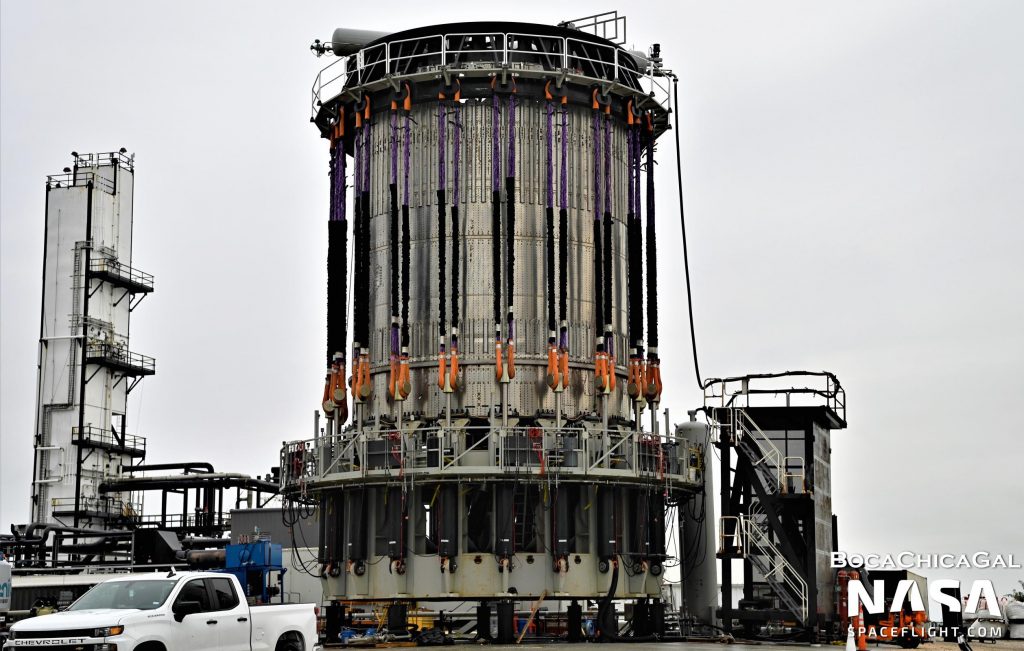
The design changes B7.1 is meant to test are not exactly radical, but it’s still unclear why SpaceX has chosen to conduct those tests after building two entire Super Heavy boosters. Earlier on in Starship development, SpaceX regularly used test tanks to qualify significant design changes before applying those changes to full prototypes, limiting the amount of resources that could be wasted on any unproven prototype. Thankfully, Super Heavy Booster 7 may have already completed similar Raptor thrust simulation tests on the same test stand B7.1 was recently installed on, meaning that SpaceX’s confidence may have been well-placed. However, if the first use of the ‘can crusher’ stand on a Super Heavy test tank finds any problems or ends in failure, B7 and B8 could still be easily rendered unusable or incapable of flight, significantly delaying Starship’s first orbital launch attempt.
Lately, SpaceX has been focused on preparing Starship S24 and Super Heavy B7 for static fire tests that could eventually qualify the pair to support the first orbital test flight. It’s not clear if or when SpaceX will be able to set aside time and evacuate Starbase’s busy orbital launch site to test B7.1 or the EDOME tank.

News
Tesla rolls out most aggressive Model Y lease deal in the US yet
With the promotion in place, customers would be able to take home a Model Y at a very low cost.
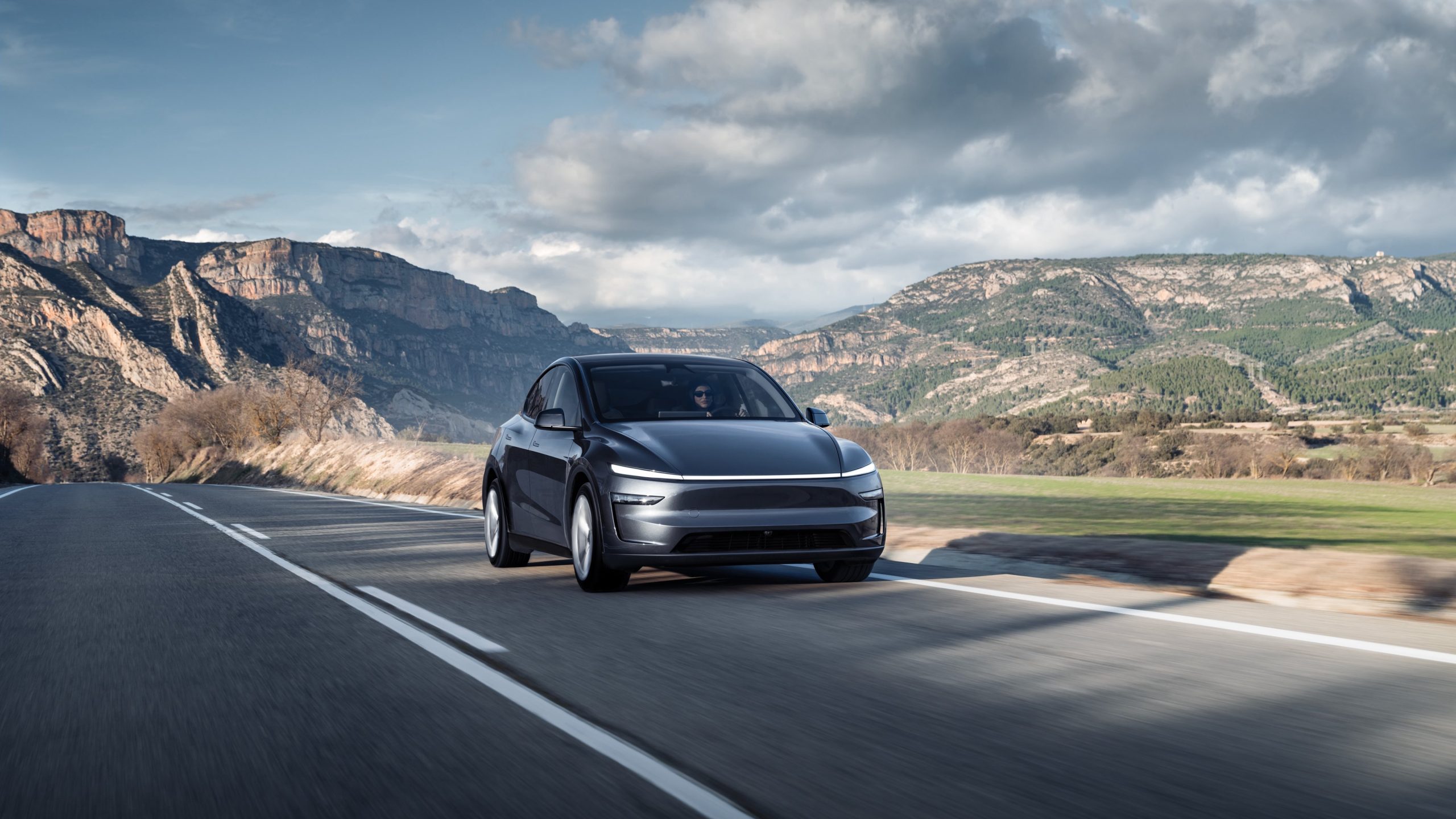
Tesla has rolled out what could very well be its most aggressive promotion for Model Y leases in the United States yet. With the promotion in place, customers would be able to take home a Model Y at a very low cost.
Zero downpayment leases
The new Model Y lease promotion was initially reported on X, with industry watcher Sawyer Merritt stating that while the vehicles’ monthly payments are still similar to before, the cars can now be ordered with a $0 downpayment.
Tesla community members noted that this promotion would cut the full payment cost of Model Y leases by several thousand dollars, though prices were still a bit better when the $7,500 federal tax credit was still in effect. Despite this, a $0 downpayment would likely be appreciated by customers, as it lowers the entry point to the Tesla ecosystem by a notable margin.
Premium freebies included
Apart from a $0 downpayment, customers of Model Y leases are also provided one free upgrade for their vehicles. These upgrades could be premium paint, such as Pearl White Multi-Coat, Deep Blue Metallic, Diamond Black, Quicksilver or Ultra Red, or 20″ Helix 2.0 Wheels. Customers could also opt for a White Interior or a Tow Hitch free of charge.
A look at Tesla’s Model Y order page shows that the promotion is available for all the Model Y Premium Rear-Wheel Drive and the Model Y Premium All-Wheel Drive. The Model Y Standard and the Model Y Performance are not eligible for the $0 downpayment or free premium upgrade promotion as of writing.
News
Tesla is looking to phase out China-made parts at US factories: report
Tesla has reportedly swapped out several China-made components already, aiming to complete the transition within the next two years.

Tesla has reportedly started directing its suppliers to eliminate China-made components from vehicles built in the United States. This would make Tesla’s US-produced vehicles even more American-made.
The update was initially reported by The Wall Street Journal.
Accelerating North American sourcing
As per the WSJ report, the shift reportedly came amidst escalating tariff uncertainties between Washington and Beijing. Citing people reportedly familiar with the matter, the publication claimed that Tesla has already swapped out several China-made components, aiming to complete the transition within the next two years. The publication also claimed that Tesla has been reducing its reliance on China-based suppliers since the pandemic disrupted supply chains.
The company has quietly increased North American sourcing over the past two years as tariff concerns have intensified. If accurate, Tesla would likely end up with vehicles that are even more locally sourced than they are today. It would remain to be seen, however, if a change in suppliers for its US-made vehicles would result in price adjustments for cars like the Model 3 and Model Y.
Industry-wide reassessments
Tesla is not alone in reevaluating its dependence on China. Auto executives across the automotive industry have been in rapid-response mode amid shifting trade policies, chip supply anxiety, and concerns over rare-earth materials. Fluctuating tariffs between the United States and China during President Donald Trump’s current term have made pricing strategies quite unpredictable as well, as noted in a Reuters report.
General Motors this week issued a similar directive to thousands of suppliers, instructing them to remove China-origin components from their supply chains. The same is true for Stellantis, which also announced earlier this year that it was implementing several strategies to avoid tariffs that were placed by the Trump administration.
@teslarati 🚨 Tesla Full Self-Driving v14.1.7 is here and here’s some things it did extremely well! #tesla #teslafsd #fullselfdriving ♬ You Have It – Marscott
News
Tesla owners propose interesting theory about Apple CarPlay and EV tax credit
“100%. It’s needed for sales because for many prospective buyers, CarPlay is a nonnegotiable must-have. If they knew how good the Tesla UI is, they wouldn’t think they need CarPlay,” one owner said.
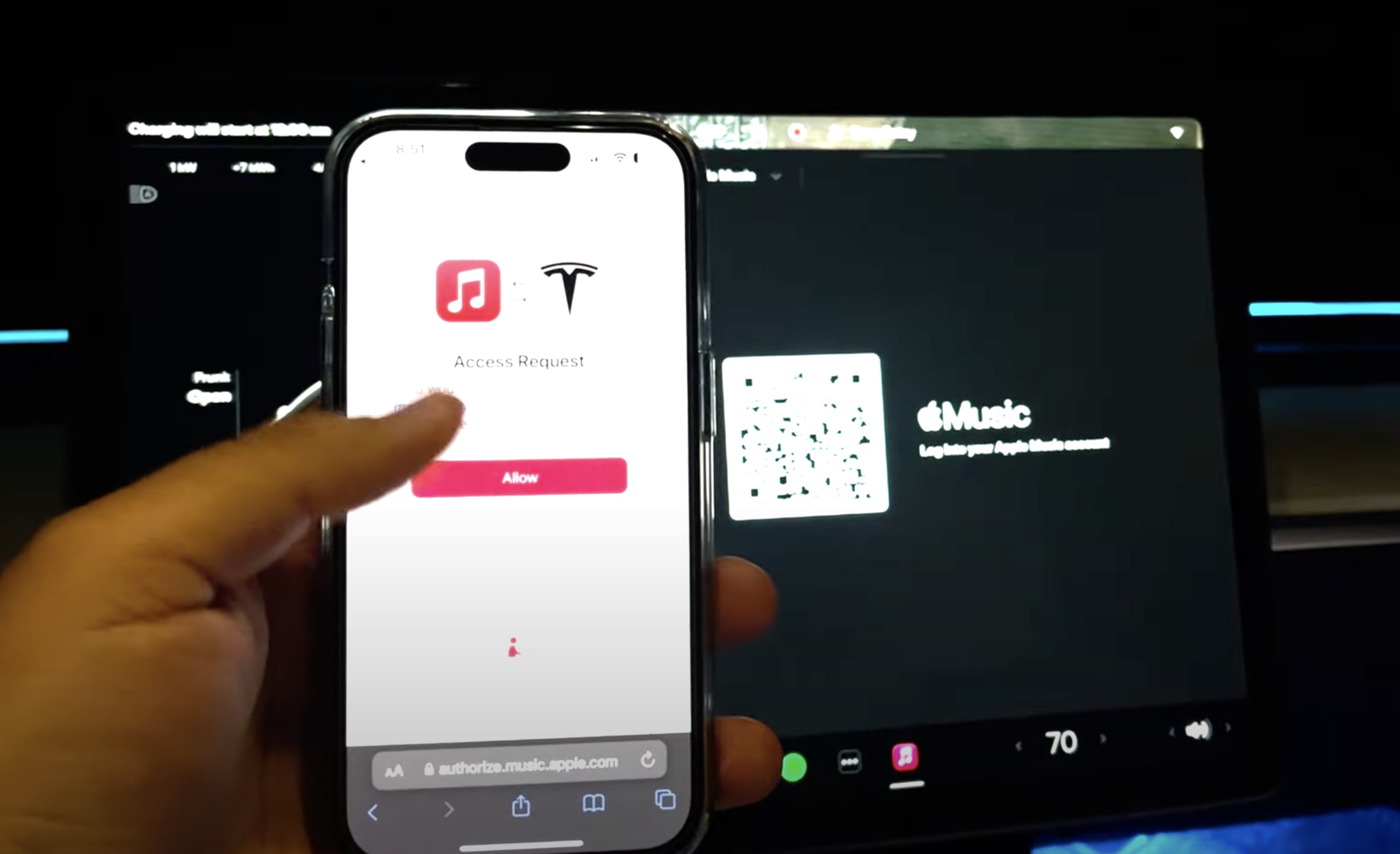
Tesla is reportedly bracing for the integration of Apple’s well-known iOS automotive platform, CarPlay, into its vehicles after the company had avoided it for years.
However, now that it’s here, owners are more than clear that they do not want it, and they have their theories about why it’s on its way. Some believe it might have to do with the EV tax credit, or rather, the loss of it.
Owners are more interested in why Tesla is doing this now, especially considering that so many have been outspoken about the fact that they would not use it in favor of the company’s user interface (UI), which is extremely well done.
After Bloomberg reported that Tesla was working on Apple CarPlay integration, the reactions immediately started pouring in. From my perspective, having used both Apple CarPlay in two previous vehicles and going to Tesla’s in-house UI in my Model Y, both platforms definitely have their advantages.
However, Tesla’s UI just works with its vehicles, as it is intuitive and well-engineered for its cars specifically. Apple CarPlay was always good, but it was buggy at times, which could be attributed to the vehicle and not the software, and not as user-friendly, but that is subjective.
Nevertheless, upon the release of Bloomberg’s report, people immediately challenged the need for it:
Everyone thinks they need it. I would think that too if I didn’t know how good Tesla’s interface was. CarPlay is a crappy layer on top of crappy info-navs, and people think it’s an imperative because it provides a level of consistency from car to car. They have no clue how much…
— Rich Stafford (@r26174_rich) November 14, 2025
How can it not be when the best engineers choose Tesla over Apple and Tesla’s core focus is auto vs Apple being mobile. It’s what Tesla does every day. It’s a side project for Apple. Still Apple is much better than any other auto OEM who attract lesser talent and make digital…
— Emu (@confessedemu) November 14, 2025
Some fans proposed an interesting point: What if Tesla is using CarPlay as a counter to losing the $7,500 EV tax credit? Perhaps it is an interesting way to attract customers who have not owned a Tesla before but are more interested in having a vehicle equipped with CarPlay?
“100%. It’s needed for sales because for many prospective buyers, CarPlay is a nonnegotiable must-have. If they knew how good the Tesla UI is, they wouldn’t think they need CarPlay,” one owner said.
Tesla has made a handful of moves to attract people to its cars after losing the tax credit. This could be a small but potentially mighty strategy that will pull some carbuyers to Tesla, especially now that the Apple CarPlay box is checked.
@teslarati :rotating_light: This is why you need to use off-peak rates at Tesla Superchargers! #tesla #evcharging #fyp ♬ Blue Moon – Muspace Lofi
-

 News1 week ago
News1 week agoTesla shares rare peek at Semi factory’s interior
-

 Elon Musk1 week ago
Elon Musk1 week agoTesla says texting and driving capability is coming ‘in a month or two’
-
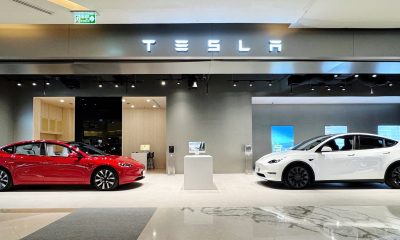
 News1 week ago
News1 week agoTesla makes online ordering even easier
-
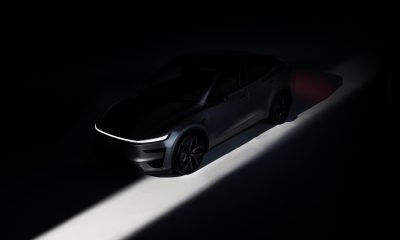
 News1 week ago
News1 week agoTesla Model Y Performance set for new market entrance in Q1
-
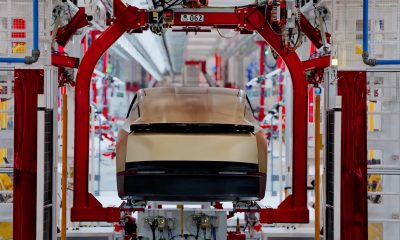
 News1 week ago
News1 week agoTesla Cybercab production starts Q2 2026, Elon Musk confirms
-
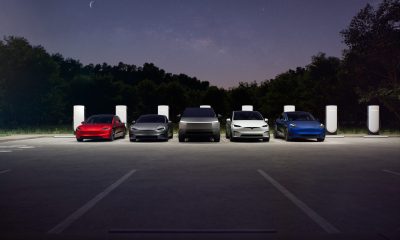
 News7 days ago
News7 days agoTesla is launching a crazy new Rental program with cheap daily rates
-
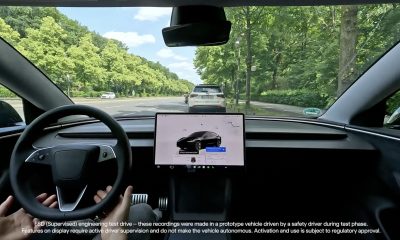
 News1 week ago
News1 week agoTesla China expecting full FSD approval in Q1 2026: Elon Musk
-
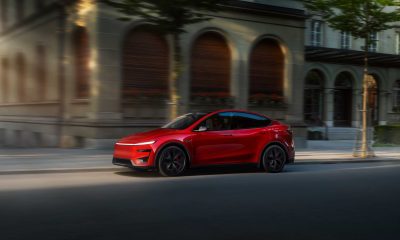
 News1 week ago
News1 week agoTesla Model Y Performance is rapidly moving toward customer deliveries
